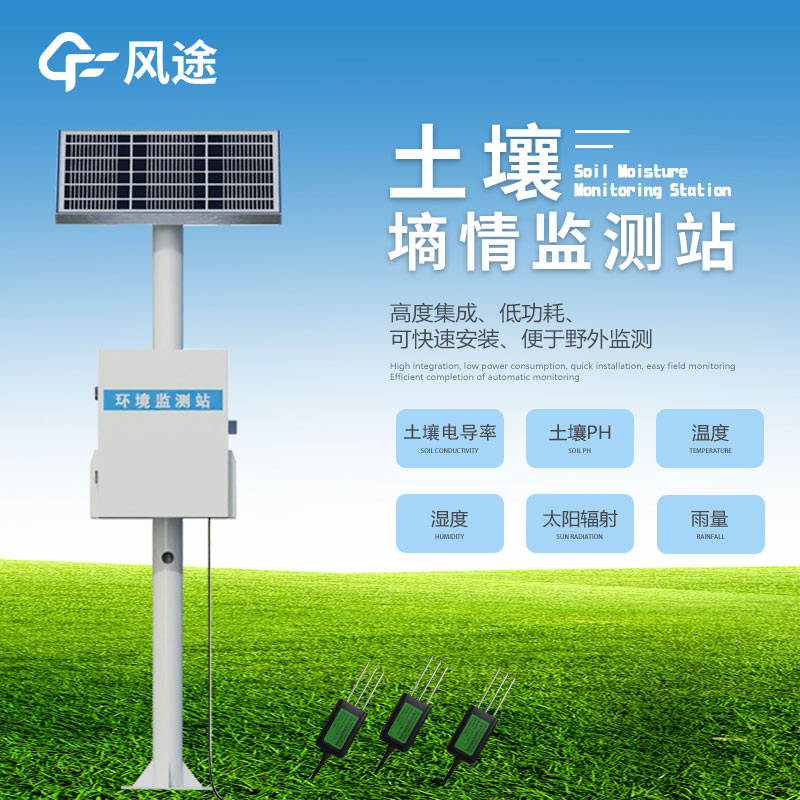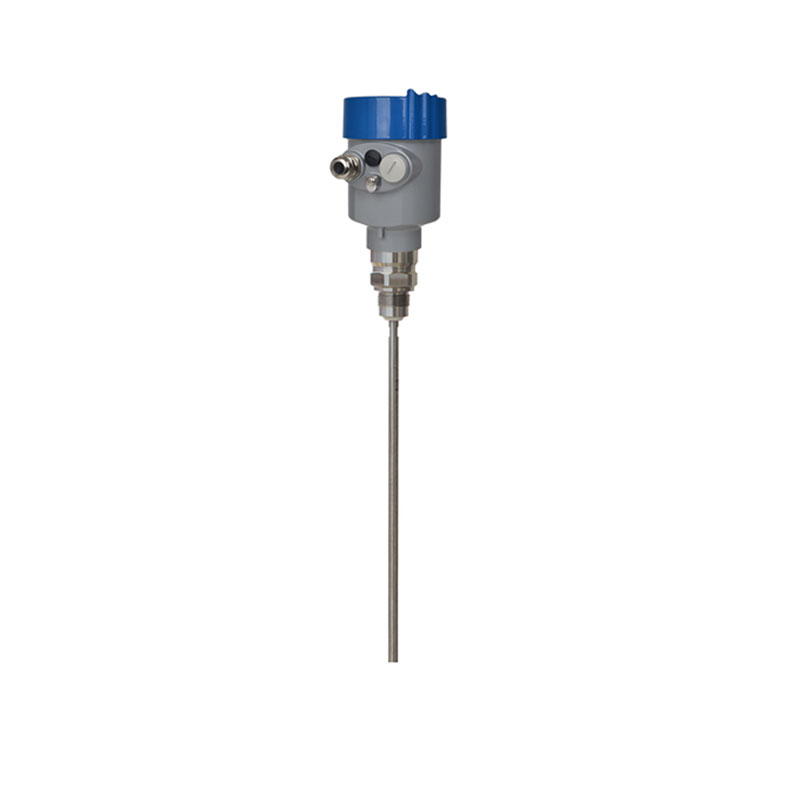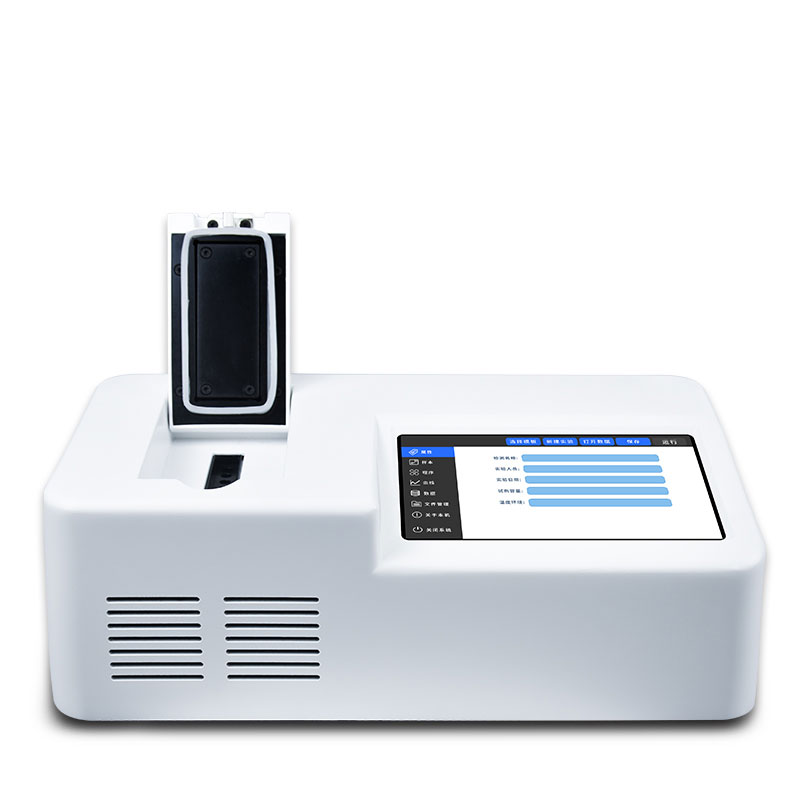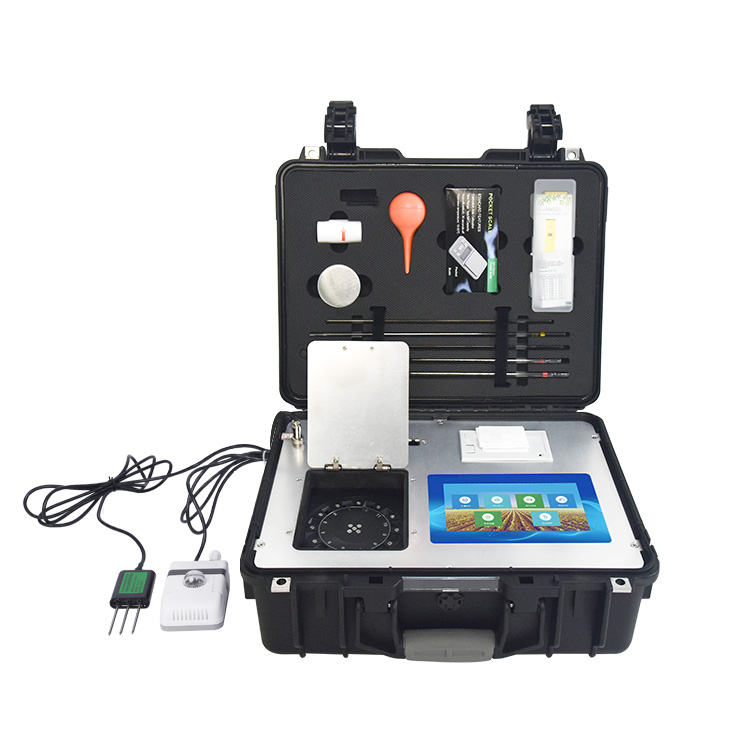Soil Moisture Testing Equipment utilizes advanced technologies such as the dielectric constant principle to dynamically observe soil moisture content in different soil layers. It emits high-frequency detection waves of nearly 1 GHz, which can penetrate plastic pipes and effectively sense the soil environment, thereby quickly, accurately, and comprehensively obtaining soil moisture information. The Soil Moisture Testing Equipment is not affected by salt ions in the soil, and agricultural activities such as the application of chemical fertilizers, pesticides, and irrigation will not interfere with the measurement results, ensuring the accuracy of the data.
Soil Moisture Testing Equipment has a unique working mode in the remote monitoring of farmland soil moisture. It can move up and down in pre-installed plastic pipes to dynamically monitor the soil moisture content of each soil layer. The sensor collects real-time soil moisture conditions, including indicators such as soil moisture content and temperature. The collected data is automatically uploaded to specialized data processing platforms such as the Jingxun Cloud Data Platform through IoT technology with the help of wireless 4G signals. This process realizes 24/7 uninterrupted data monitoring, and the data upload frequency can be set according to needs, with the fastest upload interval being 1 minute, allowing users to obtain the latest soil moisture information in a timely manner.
Users do not need to visit the farmland in person. They can visually check various soil parameters by logging into the corresponding data viewing platform through the APP mobile terminal or WEB page terminal. This convenient remote viewing method breaks the limitations of time and space. Farmers can keep track of farmland soil moisture at any time as long as there is a network connection, regardless of their location.
Soil Moisture Testing Equipment has data analysis and early warning functions. The monitoring instrument processes and analyzes the collected large amount of soil moisture data. Based on the pre-set thresholds matching the growth needs of crops, it promptly sends out early warning prompts to users when the soil moisture data exceeds the reasonable range. For example, when the soil moisture content is too low, which may affect the normal growth of crops, the Soil Moisture Testing Equipment will quickly issue a drought warning, helping farmers adjust irrigation strategies in a timely manner to avoid crop growth problems caused by excessive or insufficient irrigation. Using these long-term accumulated moisture data, a dynamic model of farmland water can be established, providing data support for optimizing planting structures, formulating crop rotation plans, and implementing precise fertilization and pest control.
In general, it helps farmers achieve precise irrigation, ensuring that crops can utilize irrigation water and nutrients to the maximum extent by irrigating at the right time, place, and with the appropriate amount of water. This improves water use efficiency by 30% - 50%, reduces groundwater consumption and runoff pollution. At the same time, it avoids problems such as poor root development and nutrient absorption disorders caused by uneven soil moisture, ensures the consistent growth of crops, improves crop yield and quality, reduces labor costs, and promotes the development of agriculture towards digitalization and intelligence.

This paper addresses:https://www.fengtusz.com/industry/801.html









